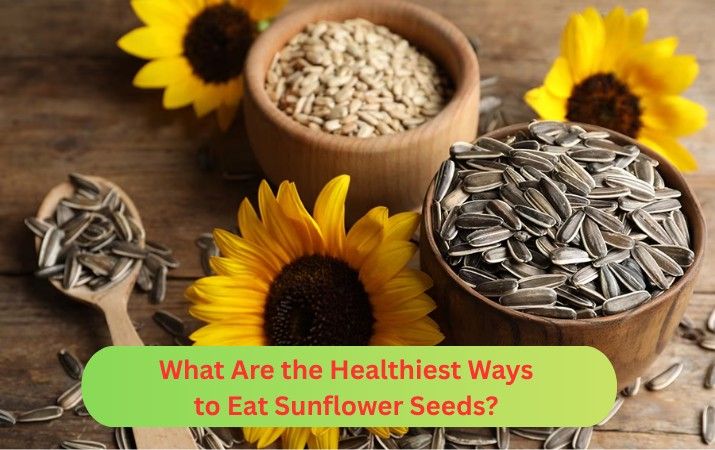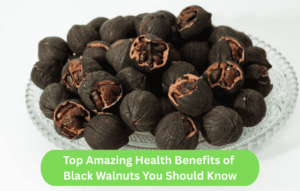
What Are the Healthiest Ways to Eat Sunflower Seeds?

Introduction
Although Sunflower Seeds are small, they are very healthy. Sunflower seeds (Helianthus annuus) are full of healthy fats, protein, vitamins, and minerals that are good for your body. Raw, lightly roasted, or as a topping on meals and salads, they’re delicious. You can easily and tasty add plant-based goodness to your daily meals by eating sunflower seeds in any way you like.
Let’s talk about What Are the Healthiest Ways to Eat Sunflower Seeds?, how nutritious they are, and how to plan to include them in your daily meals.
Nutritional Value of Sunflower Seeds
Before diving into how to eat them, it’s worth understanding why sunflower seeds are so good for you. A 30-gram serving (about a small handful) provides:
- Calories: Around 170 kcal
- Protein: 6 grams
- Healthy fats: 14 grams (mostly unsaturated fats)
- Fiber: 3 grams
- Vitamin E: 35% of the daily requirement
- Magnesium: 30% of the daily requirement
- Selenium and zinc: Vital for immunity and cell repair
These nutrients make sunflower seeds an excellent snack for heart health, energy, and overall wellness.
1. Eat Sunflower Seeds Raw for Maximum Nutrition
Raw sunflower seeds without salt are one of the best ways to eat them. Without any extra salt or chemicals, raw seeds keep all of their healthy fats, vitamins, and minerals.
They are delicious on their own as a snack, or you can sprinkle them on soups and yoghurt bowls. People who like fresh, unprocessed foods can also eat raw sunflower seeds.
Tip: Choose hulled (de-shelled) sunflower seeds for easier eating and digestion.
2. Lightly Roast Them for Extra Crunch
If you prefer a nutty and crunchy flavour, roasting sunflower seeds is a wonderful choice. However, to keep them healthy, it’s best to dry roast them without added oil or salt.
Roasting makes things taste better while keeping most of the nutrients. With a low heat (around 160°C), you can roast them in a pan or oven for 10 to 15 minutes. Don’t roast for too long, because the high heat can kill the good fats and vitamins.
For a healthy twist, try roasting with mild spices like turmeric, black pepper, or paprika to add taste and health benefits from the antioxidants.
3. Add Them to Breakfast Meals
You can easily add sunflower seeds to your breakfast to make it healthier and filling. It tastes great in juice bowls, muesli or porridge. They go well with yoghurt, fruit, or granola.
The combination of fibre, protein, and healthy fats helps keep you full for longer and provides lasting energy throughout the morning.
Example: Mix sunflower seeds with chia seeds and flaxseeds to create a powerful seed blend for your breakfast routine.
4. Use as a Salad Topper
For a simple and healthy twist, sprinkle sunflower seeds over your salads. Their crunchy texture and mild flavour make them a perfect substitute for croutons or processed toppings.
Adding sunflower seeds to salads not only enhances taste but also provides an extra dose of vitamin E, magnesium, and protein. This helps improve nutrient balance while keeping your meals light and wholesome.
Try this: A salad of mixed greens, cherry tomatoes, cucumber, feta cheese, and a handful of roasted sunflower seeds tossed with olive oil and lemon dressing.
5. Blend Them into Smoothies
Sunflower seeds can also be blended into smoothies to add a creamy texture and nutrient boost. They blend well with ingredients like banana, spinach, and almond milk.
Adding a tablespoon of sunflower seeds provides extra protein, fibre, and healthy fats — perfect for those looking for plant-based nutrition or a post-workout drink.
Tip: Use raw or lightly roasted seeds for a smooth consistency and balanced flavour.
6. Use Sunflower Seed Butter as a Spread
This is a wonderful alternative to peanut butter if you are allergic to it or just want to try something new. Roughly blending roasted sunflower seeds makes a smooth, creamy spread.
You can spread it on whole-grain bread, fruit slices, or even healthy snacks like pretzels. It’s full of protein and beneficial fats, so both kids and adults can eat it.
Note: If you want to avoid extra sugars or hydrogenated oils, choose natural sunflower seed butter that isn’t sweetened.
7. Include in Baked Goods
It’s simple to add sunflower seeds to energy bars, cakes, breads, and cookies. Not only do they make the taste better, but they also add vitamins, minerals, and zinc.
To make your own bread or batter, add a handful of sunflower seeds. With this simple step, baked goods become a healthier, more nutritious treat.
8. Mix Them with Other Seeds and Nuts
To make a healthy food, mix sunflower seeds with nuts like cashews or almonds and other seeds like sesame, pumpkin, or chia seeds. This makes a healthy trail mix that is full of vitamins, energy, and antioxidants.
It’s ideal as a midday snack, on the go, or to give you a quick energy boost before you work out.
9. Use as a Coating or Crunchy Topping
Crushed sunflower seeds can be used as a healthy coating for fish, chicken, or tofu before baking. They give a delicious crunchy crust while replacing breadcrumbs or refined coatings.
You can also sprinkle ground sunflower seeds on top of soups, stir-fries, or pasta dishes for a nutty flavour and nutritional boost.
Precautions When Eating Sunflower Seeds
Sunflower seeds are very healthy, but it’s important to eat them in balance. Because they are high in fat, eating too many of them can make you take in too many calories.
To keep sodium levels in check, choose types that aren’t salted or are only lightly salted. If you are allergic to nuts or seeds, you should talk to your doctor before eating sunflower seeds every day. In addition, don’t eat many seeds straight from the shell, because too much salt or shell pieces can make your stomach hurt.
Conclusion
Sunflower seeds are a small but mighty food that can enhance your diet in many ways. Whether eaten raw, roasted, or blended with your favourite recipes, they offer a perfect balance of taste and nutrition.
These seeds are one of the easiest superfoods to add to your daily diet. They can help your heart stay healthy and give you energy that lasts all day. Sunflower seeds are best when they are eaten raw, cooked, or mixed into whole, natural foods that give your body energy and nutrition.



